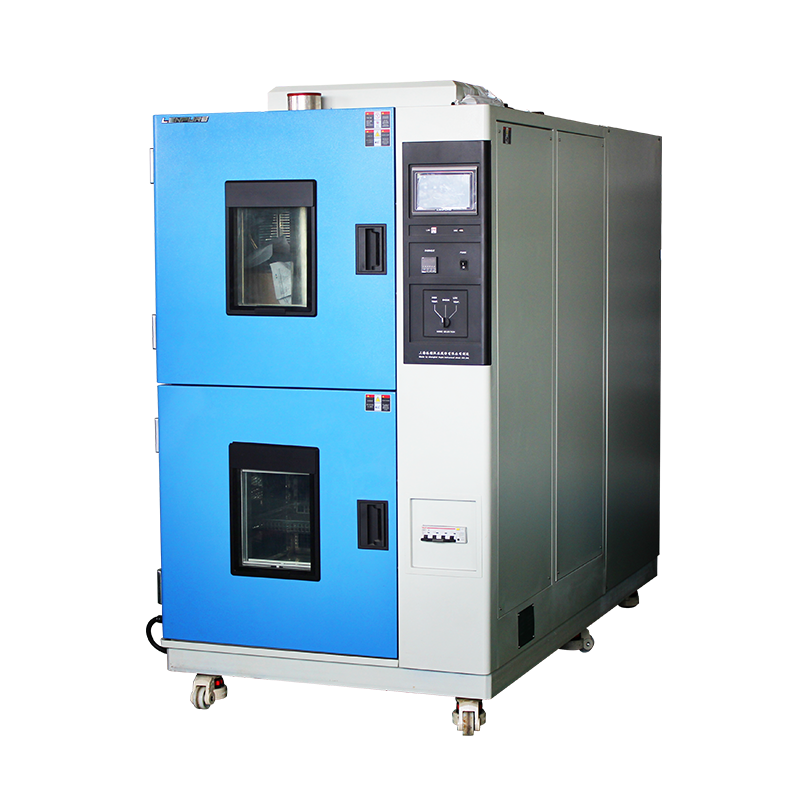

The thermal shock test chamber is truly a versatile tool in the field of material testing. It can simulate extreme environments where materials experience rapid alternations between extremely high and low temperatures within a short period. This allows for precise measurement of various parameters caused by thermal expansion and contraction of the materials during this process. Currently, this equipment plays a crucial role in the testing of a wide range of materials, including electronic devices, plastics, and metals. However, not all materials are suitable for testing in this chamber. Below is a detailed revelation of the “forbidden list” for thermal shock test chambers.
Explosives: The “Insulators” of Explosion Risks
Once explosive substances enter a thermal shock test chamber, it is like planting a “time bomb” inside the equipment, which could detonate at any moment, leading to disastrous consequences. Common explosive substances fall into two major categories: explosive nitrates and nitro – compounds. Among the explosive nitrates, nitroglycerin, nitroglycol, and nitrocellulose are all “dangerous elements”. Similarly, nitro – compounds such as trinitrotoluene (TNT), trinitrobenzene, and trinitrophenol (picric acid) are also not to be underestimated. Therefore, to ensure the safety of the equipment and the lives and property of personnel, explosives must never be placed in a thermal shock test chamber for testing.

Flammable Substances: Different Flash Points, Equal Dangers
Flammable substances are also a “no – go zone” for thermal shock test chambers. Based on their flash points, flammable substances can be divided into five categories:
Flammable Substances with Flash Points Above 30℃
Examples include coal, gasoline, turpentine oil, isopentanol, and acetic acid. These substances are highly prone to combustion once they reach a certain temperature. If they ignite inside the test chamber due to temperature changes, the consequences will be extremely severe.
Flammable Substances with Flash Points Above 0℃
Substances like alcohol, dimethyl ether, and ethyl acetate fall into this category. They can catch fire at relatively low temperatures, posing safety hazards to the test chamber.
Flammable Substances with Flash Points Between – 30℃ and 0℃
Typical representatives of this group are general ethane, ethylene, acetone, benzene, and methyl acetone. In the environment of rapid temperature changes inside the test chamber, the risk of their combustion cannot be ignored.
Flammable Substances with Flash Points Below – 30℃
Substances such as ethanol, gasoline, acetaldehyde, propylene, and carbon disulfide are in this category. Even when the ambient temperature seems low, they still have the potential to catch fire.
Flammable Gases
Under conditions of 15℃ and 1 atmosphere of pressure, gases like hydrogen, acetylene, ethylene, methane, ethane, propane, and butane can all burn. If these gases leak inside the test chamber and encounter suitable conditions, they are highly likely to cause explosions and fires.
Combustible Substances: The “Hidden Dangers” Under Rapid Temperature Changes
Some materials, although not classified as flammable items, may still pose safety hazards due to the rapid temperature changes in a thermal shock test chamber. For instance, active metals like lithium, potassium, and sodium, as well as phosphorus compounds such as yellow phosphorus, sulfurized phosphorus, calcium phosphide, and red phosphorus, along with metal powders like aluminum powder, calcium carbide, and magnesium powder, and substances like sodium bisulfite, may undergo chemical reactions when subjected to abrupt temperature changes, leading to combustion or even explosions. Therefore, these combustible substances should also be kept away from thermal shock test chambers.
Oxidizing Substances: The “Triggers” of Chemical Reactions
Certain oxidizing substances are also not suitable for testing in thermal shock test chambers. These include chlorates (such as potassium chlorate, sodium chlorate, and ammonium chlorate), hypochlorites (including potassium nitrate, sodium nitrate, and other nitrates, as well as potassium hypochlorite), peroxy acids (such as potassium peroxy acid, sodium peroxy acid, and ammonium peroxy acid), and inorganic peroxides (such as potassium peroxide, sodium peroxide, and barium peroxy acid). In an environment of rapid temperature changes, these substances may undergo violent chemical reactions, releasing a large amount of heat and gases, which can then trigger explosions and fires.
In conclusion, when using a thermal shock test chamber for material testing, it is essential to strictly adhere to the equipment’s testing scope and avoid placing the above – mentioned non – testable materials inside the chamber to ensure the safety and accuracy of the tests.